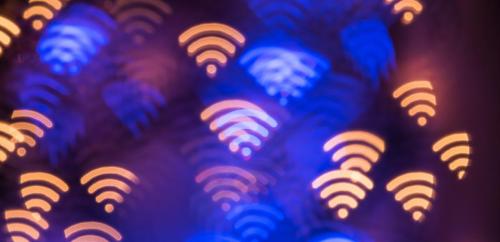Americans are relying on our Wi-Fi connections now more than ever before. Businesses have seen a mass migration to telework and video conferencing to keep connected, schools are rapidly moving to online distance learning during closures, patients are connecting to telehealth providers, and we’re all checking in virtually with friends and family.
Even before the additional demand on our Wi-Fi networks as a result of the COVID-19 public health crisis, our networks were crowded. The FCC hasn’t made available new unlicensed spectrum usable for Wi-Fi since before the iPhone was introduced. And recent studies consistently have predicted an unlicensed spectrum shortfall of well over a thousand megahertz in the next few years.
With appropriate protections for existing users, the 6 GHz band can address this shortfall and, even more importantly, make possible the roll-out of the next generation of unlicensed technologies that will support increasingly data-intensive applications like connected healthcare, immersive training or educational experiences, as well as other ultra-high resolution virtual and augmented reality (“VR” and “AR”) applications. Next-generation Wi-Fi 6 and eventually Wi-Fi 7 will usher in a host of benefits, including double and triple existing speeds, more capacity, and the ability to support many more devices simultaneously: all things we need now—not tomorrow or in ten years. Importantly, Wi-Fi will equitably enable these benefits anywhere it can reach, including urban, suburban, and rural communities across the country.
These next-gen technologies rely on very wide channels to more efficiently share unlicensed spectrum bands while delivering high speeds; however, no such channels are available for widespread Wi-Fi use today. That is why the 6 GHz band is critical to allow our Wi-Fi connections to keep pace with rapidly growing demand, including peak demand like we’re experiencing today. Allowing unlicensed users like Wi-Fi to share the full 1200 megahertz of the 6 GHz band while protecting existing users will enable families and businesses to connect more devices simultaneously, as well as expand access to new technologies and data-hungry tools, such as connected learning, virtual training, and telemedicine. Fortunately, the FCC has an open proceeding now that can make this happen in the very near future.
CTIA’s recent blog attempts to convince the Commission that half a loaf is enough to keep our Wi-Fi engine running and the other half should be reserved for their exclusive use. Not only would CTIA’s proposal keep Wi-Fi in the slow lane for the for the foreseeable future, it would tie up this valuable spectrum for ten years or more with government testing and additional proceedings.
CTIA claims that the Commission has recently made available a plethora of unlicensed spectrum, which is now just waiting for the Wi-Fi industry to put it to use. But unlicensed spectrum in the millimeter wave and terahertz frequencies is not viable for superfast, whole-home Wi-Fi. Just as you can’t build a dream home in an area zoned for heavy industry, you can’t use these high frequencies for the whole-home Wi-Fi that customers have come to expect.
Similarly, the 3.5 GHz band presents an exciting new opportunity to expand connectivity, and our members are investing in small cells to bring more capacity to urban areas and in fixed wireless to extend the reach of broadband networks to the suburban and rural areas that need it most. But this band was always designed to be an LTE/5G band, not a home for Wi-Fi.
With the FCC’s scheduled C-Band and CBRS auctions this year, CTIA’s members will have the opportunity to bid for rights to 350 MHz of new licensed mid-band spectrum. But while Wi-Fi today carries a majority of internet traffic, just 7% of total internet traffic will traverse licensed mobile spectrum by 2022. Internet traffic is expected to double within the next five years, and as we transition into the 5G era, Wi-Fi will continue to carry a growing majority of that data, including more than 70% of offloaded mobile 5G traffic. The 1200 megahertz of 6 GHz spectrum is necessary to protect our Wi-Fi and 5G connected future.
We support the Commission’s efforts to make more licensed and unlicensed spectrum available to support next-generation technologies. Wi-Fi and 5G will work together to deliver ultra-fast, high compute connectivity across the country, and we’ll need enough spectrum to support both. We appreciate the Commission’s commitment to putting more wireless broadband spectrum into the hands of American consumers as quickly as possible. It took the important steps of scheduling two mid-band auctions—for 3.5 GHz and the C-band—this year; it can maintain that momentum and accelerate our transition into next-generation connectivity by authorizing unlicensed users to share the 5.9 GHz and 6 GHz bands. Unlicensed access to 6 GHz is the right choice for American consumers, now more than ever before.
